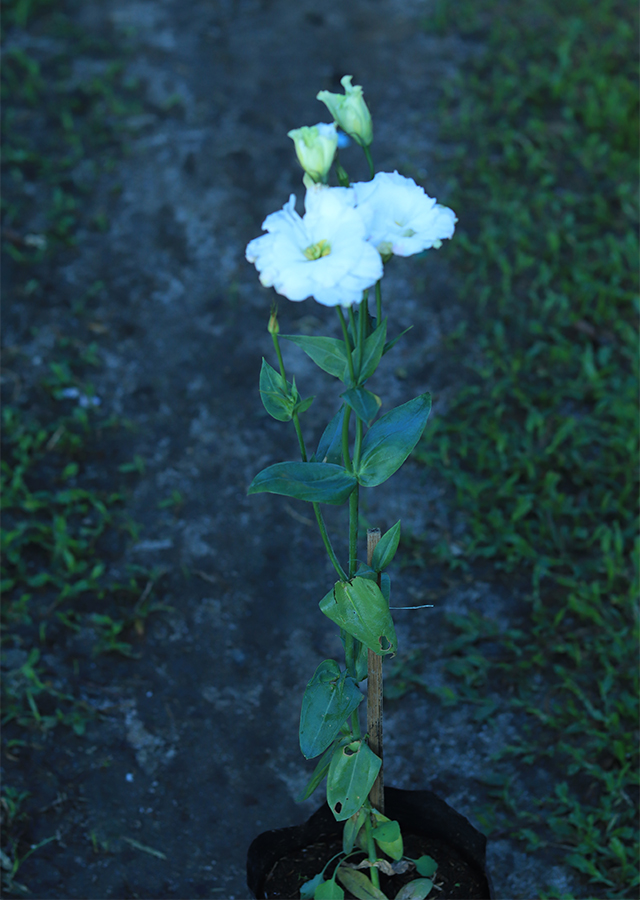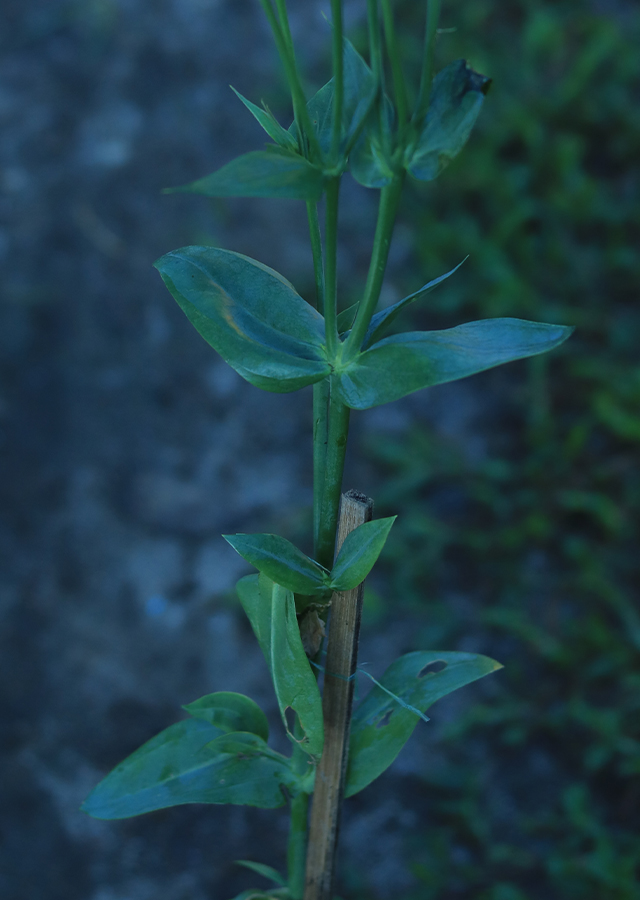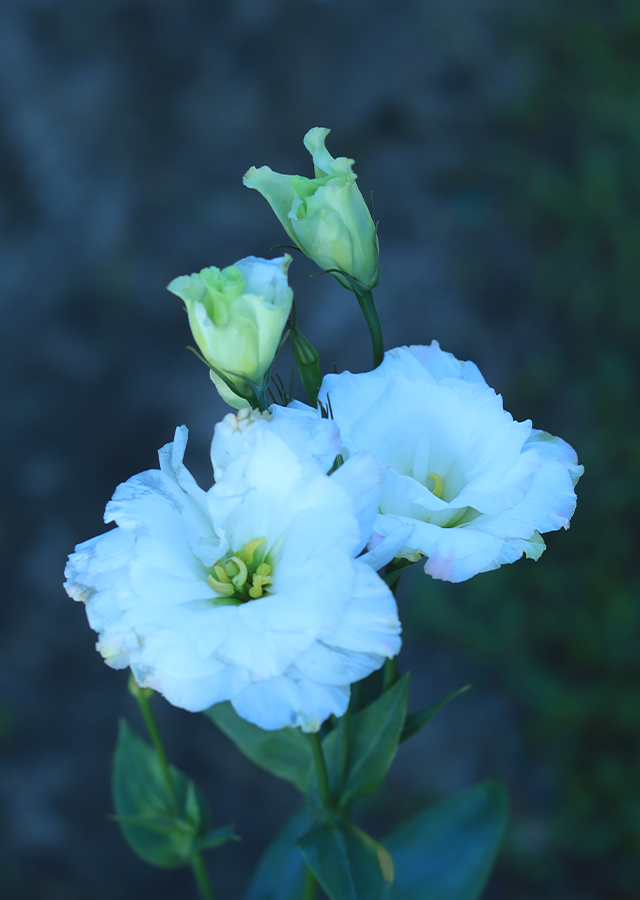Lisianthus
Eustoma grandiflorum (Raf.) Shinners
Gentianaceae
Location in our garden
Principal



Synonym
Eustoma andrewsii A.Nelson
Eustoma gracile Engelm. ex Small
Eustoma russellianum G.Don
Habitus
Herbaceous. Herbaceous annual, biennial, and perennial that can reach between 0.1-1 m in height and up to 35.5 cm in width.
Part Used
The Whole Plant
Growing Requirements
Full Sunshine
Habitat
Terrestrial
Overview
Eustoma grandiflorum is native to the warm regions of northern South America, the southern United States, the Caribbean, and Mexico. It is an high economic value ornamental plant. Lisianthus plants are mostly cultivated for their exotic flowers that can be used in bouquets and for indoor decoration. Flowers can be combined in bouquets with anthurium, rosehips, and blackberries. They serve as an excellent indoor air purifier. Lisianthus flowers are also very popular among allergy-prone growers thanks to their non-fragrant flowers. In Greek, the name Lisianthus means “dissolving flower”, while the word Eustoma means “beautiful mouth”. Lisianthus plants are pet-friendly and non-toxic to humans.
Vernacular Names
No found data on this. Need further research.
Agroecology
Lisianthus plants prefer warm days with full sunlight. They can also do well in partial shade, but only when they grow in areas with hot temperatures. These plants require a soil that is always damp, so we should water them regularly. Make sure to protect them from rain, as this will produce spots on their petals. Need some extra attention, with nutrient-rich fertilizer during their growing season. They can survive in a vase filled with water for two weeks or so. Do well in day temperatures between 23.8-29.4 °C. At night, they prefer warm temperatures in the 15.5-18.3 °C range.
Morphology
- Root - fibrous system.
- Stem - long, erect single to sometimes branching stems.
- Leaves - smooth, dark green, succulent-like foliage.
- Flower - funnel-shaped, produce exquisite flowers in various shades of purple, pink, blue, and white. Some specimens will exhibit bicoloured petals.
Cultivation
- Lisianthus generatively propagated by seed, and vegetatively by cuttings.
- Growing from seed can be rather difficult because the seed is dust particle size and it takes about 5 months from planting to first bloom, all of which basically precludes direct sowing in the ground in spring. If grown from seed, start seed indoors at least 10-12 weeks before last frost date. Set seedlings or purchased plants out after last frost date. Pinch young plants to encourage branching.
Chemical Constituents
Essential oils, secoiridoids, flavonoids, xanthones.
Traditional Medicinal Uses
- Studies suggest that lisianthus extracts can be utilized as potential antifungal and antibacterial agents and for the development of pharmaceutical and cosmetic products.
Part Used
Reference Sources
- Herbalist. (2016). EUSTOMA GRANDIFLORUM SHINN (TEXAS BLUEBELL). http://medicinalplants.us/eustoma-grandiflorum-shinn-texas-bluebell. 07-03-2022.
- Ji, Keunho, Kim, D.K., and Kim, Y.T. (2017). Antimicrobial and Antifungal Activities of Lisianthus (Eustoma grandiflorum) Essential Oil. Journal of Life Science 27(4):430-434. DOI:10.5352/JLS.2017.27.4.430.
- Missouri Botanical Garden. (No date). Eustoma grandiflorum. https://www.missouribotanicalgarden.org/PlantFinder/PlantFinderDetails.aspx?taxonid=280810. 07-03-2022.
- Secuianu, M. (2022). Lisianthus Flowers Guide: How to Grow & Care for “Eustoma”. https://gardenbeast.com/lisianthus-guide/. 07-03-2022.
- The Plant List. (2013). Eustoma grandiflorum (Raf.) Shinners http://www.theplantlist.org/tpl1.1/record/kew-2805325. 07-03-2022.
